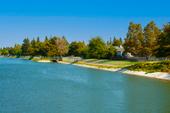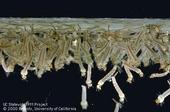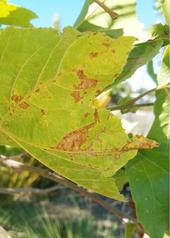- Author: Belinda Messenger-Sikes

Pesticides and fertilizers applied around homes, residential or commercial landscapes, school sites, and other areas can enter our creeks, rivers, and oceans, degrading water quality. While pesticides and fertilizers can be useful in controlling pests and helping plants grow, their overuse and misuse can harm the environment and human health.
To find out more, see our updated pages on urban pesticides, fertilizers, and water quality. These pages feature plain language definitions of toxicity and water quality and explanations of how pesticides and fertilizers get into our waterways. There's also information about how you can protect our creeks, rivers, and oceans when managing your home and landscape.
Learn about urban...
- Author: Lauren Fordyce
- Author: Belinda Messenger-Sikes
- Author: Karey Windbiel-Rojas

You've heard of terms such as green, organic, natural, ecofriendly, and less toxic to describe pest control products and services. But what do these terms really mean? To different people, they can mean different things, creating obvious confusion. But some of these terms have specific meanings, regulations, and rules when referring to pesticides and pest control. This article aims to clarify the differences.
What is organic?
Some people think organic means no pesticides, but that is incorrect. The term organic (in the context of food production and pest control) can mean no pesticides were used, but it can also mean that only organically acceptable pesticides and fertilizers were...
- Author: Andrew Sutherland

Many gardeners have fountains, ponds, and other water features in their landscapes. Water gardens are beautiful and calming, but, if not managed properly, can add an unpleasant element to the landscape—mosquitoes. How can you prevent mosquito infestations?
How do mosquitoes develop?
First, it is important to understand mosquito biology. Mosquitoes are small flies that lay their eggs in, on, or near stagnant water. The larvae, or wigglers that hatch from the eggs live in water and feed on organic debris until they transform into a motile pupa, or tumbler, and finally into the familiar adults. This process, from egg to adult, requires as little as one week when conditions are favorable. Emerging females...
- Author: Belinda Messenger-Sikes

Have you been seeing a lot of defoliated sycamore trees recently? Sparse foliage and early leaf drop on sycamore trees might be due to anthracnose. The cool, wet spring in many parts of California provided the perfect conditions for this disease. Anthracnose is a common fungal disease sometimes called leaf, shoot, or twig blight. It can cause twisted, distorted branches in American sycamore, some varieties of London plane trees, and California sycamore trees. Sycamore anthracnose is primarily an aesthetic concern since it usually doesn't kill established trees.
Symptoms
Take a close look at the fallen leaves for the characteristic irregular blotches caused by this disease. Anthracnose can...
- Author: Belinda J. Messenger-Sikes

What is that weird wormlike thing in your garden? A slug? An earthworm? It may be neither—it it might be a land planarian. Land planaria are also called terrestrial flatworms and hammerhead worms. They are often colorful, such as the blue garden flatworm (Caenoplana coerulea) or patterned with stripes, like the shovel-headed garden worm (Bipalium kewense).
Land planaria are generalist predators of earthworms, slugs, and other mollusks. They capture prey by wrapping their bodies around it and engulfing the prey with mucous. Planaria mouths are not at the end of their body like most animals, but on the underside near the middle of their body. Unlike slugs, land planaria do not have tentacles (such...


